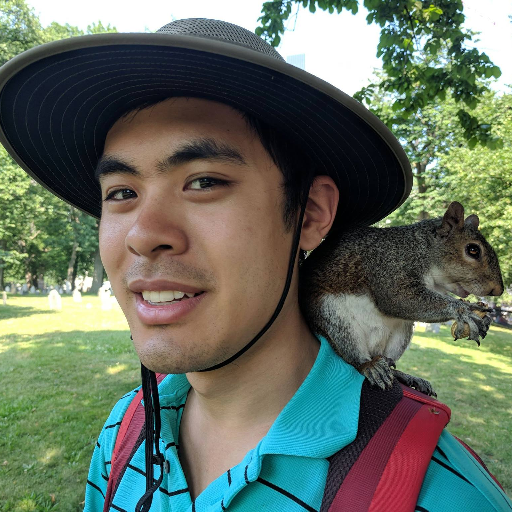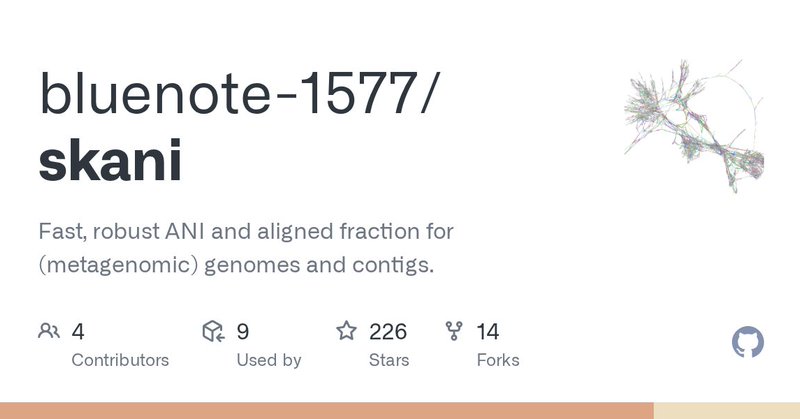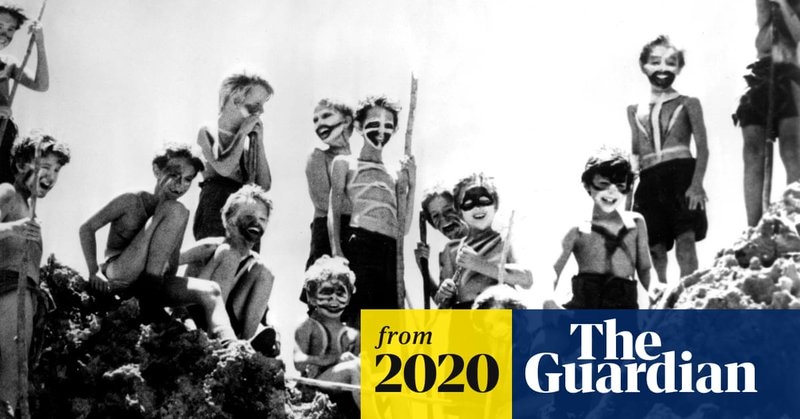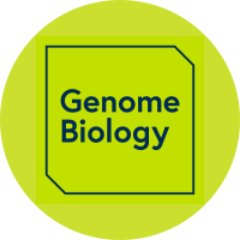
Yun William Yu
@YunWilliamYu
Followers
153
Following
20
Media
2
Statuses
39
Aspiring dilettante.
Cambridge, MA
Joined July 2014
Turns out that properly calibrated sparse chaining can give you nearly all the benefits of alignment at a fraction of the cost! Brilliant work as always by @jim_elevator (who will shortly be on the job market, as an aside)
skani from @jim_elevator and @YunWilliamYu achieves fast calculation of average nucleotide identity (ANI) between metagenome-assembled genomes (MAGs), with improved robustness against incomplete and fragmented MAGs. OA paper: https://t.co/jdbN3xb1Qs
0
4
15
Me and @YunWilliamYu's new preprint on skani, a new tool for calculating ANI for metagenomic assembled genomes, is out. It's available on GitHub here: https://t.co/dEkIzxHDNT 1/6
github.com
Fast, robust ANI and aligned fraction for (metagenomic) genomes and contigs. - bluenote-1577/skani
Fast and robust metagenomic sequence comparison through sparse chaining with skani https://t.co/JllwgxlnZQ
#biorxiv_bioinfo
1
22
46
Mora: abundance aware metagenomic read re-assignment for disentangling similar strains https://t.co/7VTiNv030E
#biorxiv_bioinfo
0
1
6
I'm happy to announce that our web app SlowMoMan for discovering important features along user-drawn paths in a 2D embedding was accepted for presentation at GIW/ISCB-Asia. Credit to Kiran Deol, who did most of the actual work.
biorxiv.org
Nonlinear low-dimensional embeddings allow humans to visualize high-dimensional data, as is often seen in bioinformatics, where data sets may have tens of thousands of dimensions. However, relating...
0
0
2
When we don't understand why heuristics work empirically, that just means we don't have enough theory yet. Jim's latest work proves that seed-chain-extend alignment actually has rigorous asymptotic bounds under average-case analysis.
Excited and nervous to share this paper authored with @YunWilliamYu. Using average case analysis of random, mutating strings, we rigorously prove runtime and accuracy bounds on k-mer based seed-chain-extend alignment, e.g. long-read aligners such as minimap2. 1/11
0
3
7
"Man, these scoring rules are really complicated." "I wonder if it's NP-hard." 4 years later, we've proven it. Presenting my paper with @YunWilliamYu, "Skiing is Easy, Gymnastics is Hard: Complexity of Routine Construction in Olympic Sports", in FUN '22. https://t.co/LFaHBucog1
1
2
17
By using the older LogLog sketch, modern lattice cryptography libraries like Palisade let us perform secure federated count-queries across a network of institutions. Work by @AlexLeighton19
Secure Federated Aggregate-Count Queries on Medical Patient Databases Using Fully-Homomorphic Cryptography https://t.co/tYGXb6hI1m
#bioRxiv
0
1
3
Congratulations to my undergrad Ziye Tao on her upcoming ISMB/ECCB proceedings presentation/Bioinformatics publication on the expected 10-anonymity of HyperLogLog sketches!
academic.oup.com
AbstractMotivation. The rapid growth in of electronic medical records provide immense potential to researchers, but are often silo-ed at separate hospitals
0
1
9
My brilliant student @jim_elevator's latest unification of theory and application: proving theorems about k-mer distributions can have a real practical impact on read alignment.
Theory of local k-mer selection with applications to long-read alignment https://t.co/F7A5Kw3zSt
#biorxiv_bioinfo
0
4
14
Check out our work on balancing accuracy and privacy using probabilistic sketches for federated medical records.
jmir.org
Background: Over the past decade, the emergence of several large federated clinical data networks has enabled researchers to access data on millions of patients at dozens of health care organizatio...
0
0
0
Always important to remember that while a good story is compelling, those stories may not be true.
theguardian.com
When a group of schoolboys were marooned on an island in 1965, it turned out very differently to William Golding’s bestseller, writes Rutger Bregman
0
0
0
Physical distance, not social distance, is what we need to fight COVID-19. https://t.co/8cUjZU1SQn
link.medium.com
Every idea needs a Medium
0
1
0
Contact tracing is a key tool for combating COVID-19. We should absolutely be creating phone apps to do this at scale, but it's important to know that with modern cryptographic tools, we can get contact tracing without giving up all of our privacy. https://t.co/6w2jX6nFQI
arxiv.org
Contact tracing is an essential tool for public health officials and local communities to fight the spread of novel diseases, such as for the COVID-19 pandemic. The Singaporean government just...
2
3
4
Quarantine could be beautiful, y'all! @YunWilliamYu and I reconnected (after not seeing eachother in 10 years since @IndianaUniv!) to bring you this non-mathy, hopefully accessible, summary of some of the mathematical ideas behind Flattening the Curve:
medium.com
Written by Yun William Yu, illustrated by Cristina Vanko, and edited by Daphne Ippolito.
1
3
4
.@CristinaVanko and I put together a non-mathy, hopefully accessible, summary of some of the mathematical ideas behind #flattenthecurve
link.medium.com
Every idea needs a Medium
0
0
1
A very long time in the process, but Sumaiya's work on metabolic functional profiling of metagenomic reads finally came out!
Carnelian: from @snz20, @YunWilliamYu and Berger, a pipeline for metabolic functional profiling of metagenomics sequencing reads. it uses a gapped k-mer approach, which is better suited to identifying unannotated genes with similar function to other genes https://t.co/nQYxNaoch2
0
0
1
Technology may change the world, but it is art that shows us the reflection of what we've wrought. https://t.co/vW71oyqJQE
bbc.com
The haunting series of photos by US photographer Eric Pickersgill is called 'Removed'.
0
0
0
I've said it time and again: I think better at chalkboards, and it seems most mathematicians agree with me:
nytimes.com
A photo survey of the blackboards of mathematicians.
0
0
0
Josh Moore's comments on the scientific burden of the proliferation of vendor specific file formats. Open file formats are crucial for open science. #ISMBECCB2019
0
0
0
Always exciting to see new theories develop on the history of our planet and moon! @gserratomarks
https://t.co/MK3NHLtOXs via @massivesci
massivesci.com
We're still learning the basics about Earth's nearest neighbor
0
0
2



















